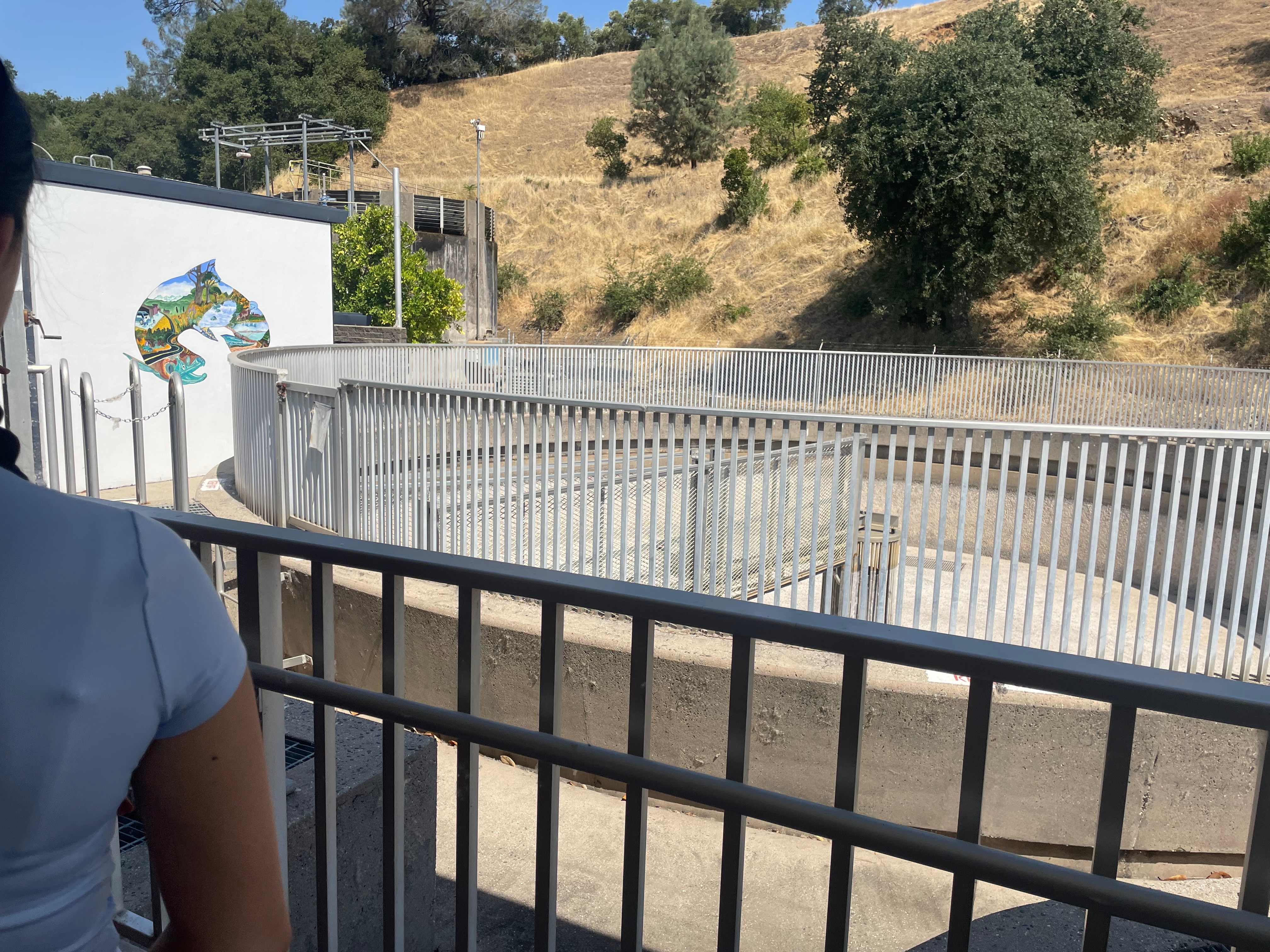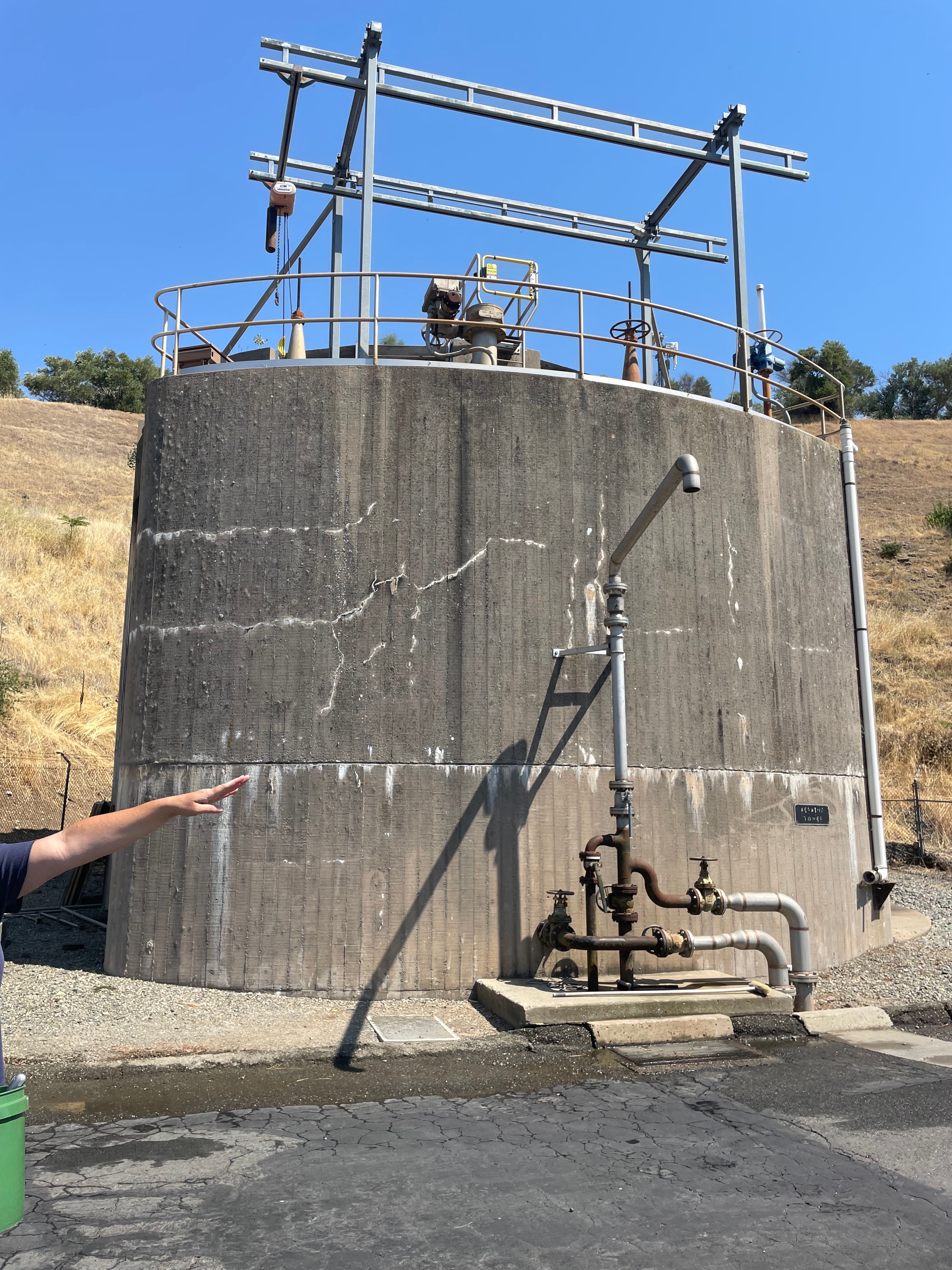Hutton Scholar Blogs: Powering the Blue Economy
AFS Hutton Junior Fisheries Biology Scholar, Katy Zhen, shares insights from her summer in RAEL and conducting field work at the water, fisheries, and energy nexus

Starting the Summer
I am Katy, a 2025 Hutton Scholar of the American Fisheries Society. This summer I am working with Alexandra Grayson and Dr. Daniel Kammen at the Renewable and Appropriate Energy Laboratory, who, with Tufts University and the University of California San Diego, have been answering questions at the nexus of wave energy and the blue economy. The main task that I will be assisting with is “generating energy demand profiles for blue economy industries”. I will visit aquaculture farms on the west coast with my mentor Alexandra to validate some of the energy demand datasets we’ve developed and learn about the energy efficient strategies these farms are implementing. I will also be helping develop load profiles, models of energy demand and where the demand is coming from, which differ depending on season, time of day, and day of the week.
I am participating in the Hutton Junior Fisheries Biology Program because of my interest in the environmental sciences which was inspired by my childhood growing up in the height of the pollution crisis in China. I felt called to fisheries science specifically because of my isolation from bodies of water as a child and my sudden introduction to aquatic habitats when I immigrated to San Francisco. Living next to the Bay and the pacific ocean, I was introduced to the importance of these habitats and inspired to protect the health of the oceans.
Farmed fish and its growing demand
The global population has grown dramatically over the past decade, and the demand for food has risen accordingly. The lack of space and resources on land for animal farming has pushed many toward aquacultures as the response against food insecurity. This sector has extreme potential considering the fact that 70% of the planet is ocean but only 2% of human food production comes from it. In fact, according to the 2024 edition of The State of World Fisheries and Aquaculture (SOFIA), the global aquaculture production has already increased by 4.4% since 2020 and will only continue growing in the next decades. However, as the demand for aquaculture grown foods increases, so does the demand for energy to power these farms. In order to ensure that the industry grows sustainably, the Food and Agriculture Organization of the United Nations (FAO) has proposed the Blue Transformation, a vision to “expand aquatic food systems and increase their contribution to better production, better nutrition, better environment and better life”.
In addition to farming fish for food, fish are often spawned and harvested at hatchery facilities for conservation. Recently my mentor Alexandra and I visited Nimbus Hatchery in Gold River, CA to validate our finfish hatchery load profile data. There, we were introduced to their process of spawning and raising both salmon and steelheads to be released back into the American River. The hatchery was originally built in compliance with a California law which states that each company that builds a dam must be responsible for funding a nearby hatchery to mitigate for the loss of fish habitat. While visiting Nimbus, I learned that an energy intensive process at the hatchery was lowering the water temperature through a cooling system. Female salmon are extremely sensitive to changes in water temperature and will only spawn eggs when the temperature is below a certain threshold.

There are multiple types of aquacultures that are currently being utilized to farm seafood, with the main three being recirculating aquaculture system (RAS) inland aquaculture system, non-RAS inland aquaculture, and offshore marine aquaculture. Nimbus hatchery acclimate juvenile fish they spawn using raceways, which is a non-RAS aquaculture. Certain types of non-RAS aquaculture, by many metrics, are considered the least sustainable option due to their polluting of freshwater drinking sources and alteration of natural landscapes due to the large amount of land necessary. The hatchery manager mentioned to us that he has been pushing for the change to RAS aquacultures but limits in funding have prevented the switch. RAS aquacultures are a better alternative but they are extremely energy intensive. However, with innovations in renewable energy, it has the potential to be sustainable and play a key role in growing aquaculture production and conservation needs in the future. The main issue with both of these options is that they are inland and therefore compete for space with human and animal populations. Marine aquacultures are a loophole through this problem due to the ocean’s expansive size, making it the choice with the most potential for expanding production. However, offshore aquaculture is not without its drawbacks, posing harm to the marine ecosystem and the sovereignty of tribal nations by confining non-native fish species in open-water cages and raising the risk of disease and pollution. In 2017, the failure of a Puget Sound net pen facility released non-native salmon which competed with native species for food and habitat.
While marine aquacultures bypass the competition for land space, they also require large amounts of energy. This is especially the case for offshore aquacultures which are growing in popularity around the world. Energy requirements for these farms vary depending on the species farmed but can include desalination, cleaning, refrigeration, monitoring, and lighting. Feeding is often the most energy intensive process, at times accounting for 90% of energy use, in finfish and crustacean farming. Mollusks and other low trophic marine (LTM) species often require less energy because feeding is not necessary as they can directly extract dissolved nutrients from the marine environment. These species are commonly farmed on the west coast especially in Washington which is the number one producer of mollusks in the country. In order to ensure that marine aquaculture can remain a sustainable farming option even as the market expands, the Pacific Northwest National Laboratory (PNNL) has been looking into how aquacultures can turn to renewable energy sources to fulfill many of its energy requirements.
The offshore renewable energy source with the most potential for implementation into aquaculture systems is marine hydro-kinetic (MHK) energy which derives energy from the mechanical motion of ocean water, including waves, tides, and currents. The PNNL suggests a method called co-location which would pair MHK energy devices with aquaculture developments. This arrangement can be mutually beneficial for the two sectors. MHK energy would power aquaculture operations, while aquaculture farms would provide the marine energy industry with an application space and promote further development in the field. As the co-location method is deployed across different case studies around the world, it is obvious that the method has clear benefits including cost savings on energy use, ability to minimize environmental effects by lowering greenhouse gas emissions, and the ability for excess power from MHK devices to provide power to onshore facilities like hatcheries and processing facilities. The main barriers to implementing co-location in aquaculture operations are the high costs associated with device installations and the uncertainty regarding licensing and consenting procedures since there is currently a lack of clear regulatory frameworks due to the nascentness of MHK, especially in the US.
Other than implementing renewable energy into aquaculture developments, there have also been other strategies developed to improve energy efficiency with four notable ones being: underwater and autonomous feeding, LED lights, heat pumps, and battery storage. In most current finfish aquaculture farms, salmon and other finfish are fed through pneumatically driven, mechanical feeding systems where feed is blown through tubes into individual pens. The fairly recent development of underwater feeding reduces the amount of energy needed by 50–60% by transporting feed through the feeding hoses using water pressure. Similarly, LED lights have 60% less energy demand and double the life span compared to the halogen lights commonly used in the industry today. Currently, aquaculture farms that require heating use electrical heating panels during the winter to maintain a stable temperature. However, a more energy efficient option is utilizing water to water heat pumps which can pull heat from the environment and deliver between 1.5–4.5 times the energy they receive from the grid. Lastly, energy demand can be reduced through peak shaving by charging battery packs at hours with low demand to be used during peak hours.

As the demand for aquaculture foods continues to grow, it is vital that we are meeting the demand with sustainability in mind. Research has demonstrated the benefits of expanding the offshore aquaculture industry and it is crucial that we adapt accordingly in order to guarantee food security for the future. This is especially important in the United States where we import 90% of our seafood and are falling behind other countries like China and Norway in terms of aquaculture farming capabilities.
Sources:
Montgomery, Kat. “Opportunities and barriers facing offshore finfish farming in the US.” (2019).
FAO. “The State of World Fisheries and Aquaculture 2022: Towards Blue Transformation.” (2022)
Freeman, M., et al. “Offshore aquaculture: a market for ocean renewable energy.” Report for Ocean Energy Systems (OES) (2022).
Krause, Gesche, et al. “Prospects of low trophic marine aquaculture contributing to food security in a net zero-carbon world.” Frontiers in Sustainable Food Systems 6 (2022): 875509.
Møller, Sofie. “Reduction of CO2 Emissions in the Salmon Farming Industry: The Potential for Energy Efficiency Measures and Electrification.” MS thesis. NTNU, 2019.
Henriksson, Patrik. “Energy efficiency of aquaculture.” Global Seafood Alliance, 1 Sept. 2010, www.globalseafood.org/advocate/energy-efficiency-aquaculture/.
Hardy, Ronald W. “Best management practices for salmon feeds.” Global Seafood Initiative, 1 Apr. 2004, www.globalseafood.org/advocate/best-management-practices-for-salmon-feeds/#:~:text=Feeding%20frequency%20and%20delivery,of%20feed%20that%20is%20lost.
You must be logged in to post a comment.